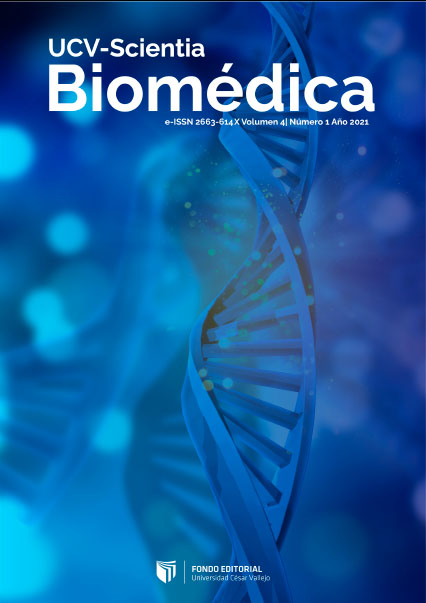Perception of the quality of life in women with urinary incontinence in a basic primary care unit. Trujillo, Perú.
DOI:
https://doi.org/10.18050/ucvscientiabiomedica.v4i1.04Keywords:
Quality of life, Urinary incontinence, King’s Health QuestionnaireAbstract
The objective was to describe the perception of quality of life in women with urinary incontinence in the basic primary care unit Víctor Larco EsSalud Trujillo in 2014. An observational, descriptive, cross-sectional study was carried out. The data of 41 women with urinary incontinence were analyzed through the King’s Health Questionnaire, a specific instrument to measure the quality of life in patients with urinary incontinence which evaluates 9 dimensions; a mean global score greater than 30 indicates poor quality of life. The results obtained show a mean age of 56,4 ± 7,4 years and time of illness 3,8 ± 3,8 years. It was found that women with urinary incontinence perceive their quality of life as poor with a mean global score of 39,06 ± 18,96, the most affected dimensions being: limitation of daily activity with 42,28 ± 22,42 and severity with 41,63 ± 18,96. Women with a time of urinary incontinence disease ≥ 5 years perceive their quality of life as poor with a mean global score of 43,44 ± 24,77, the impact of urinary incontinence being the most affected dimension with 51,11 ± 24,77. Patients older than 60 years with urinary incontinence have poor quality of life with a mean global score of 42,09 ± 19,25 and the most compromised dimension is physical limitation with 47,92 ± 20,07. It is concluded that urinary incontinence leads to a poor quality of life, being the most affected dimensions limitations of daily activity and severity; The worse the quality of life the longer the illness and the older the age.
Downloads
Downloads
Published
How to Cite
Issue
Section
License
Copyright (c) 2021 UCV Scientia Biomédica

This work is licensed under a Creative Commons Attribution-NonCommercial 4.0 International License.








